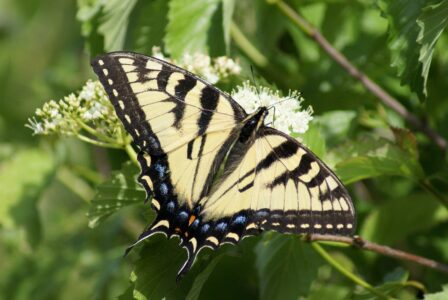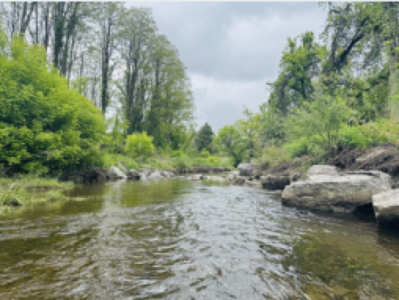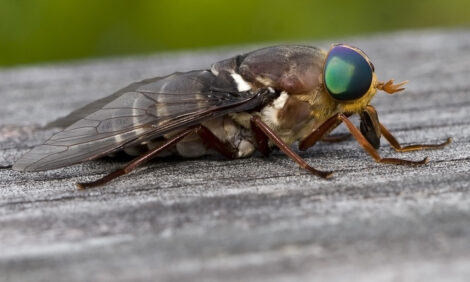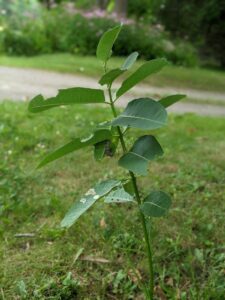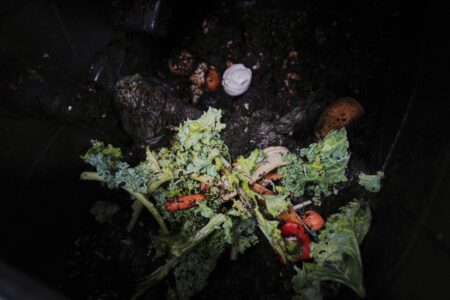Leaf Cutting Ants Grow Fungus To Feed Their Young
In early January, my wife and I returned from a vacation to tropical beaches and rainforests on Trinidad and Tobago, the most southern of the Caribbean Islands. The trip was expressly to learn about plant and animal life, but mostly about birds. Memorable activities included observing oil birds, the only nocturnal fruit-eating bird, and watching 2,000 scarlet ibises fly to a roost site on a small island. The animal life which captured my interest was a pedestrian creature, the leaf-cutting ant, which grows fungus in underground gardens. During the first morning on Trinidad, while staying at the Asa Wright Nature Center, we went on a discovery walk with our guide, Elsa, who pointed out on the forest floor a reddish ant carrying a quarter size leaf fragment so big it nearly toppled the ant. The ant was headed along a narrow trail leading to a dirt mound 3 feet high and 30 feet in diameter. She told us ants shred the leaf, consume some of the juices, and then add anal fluid, which acts like fertilizer, before setting the leaf mass on fungus plants in subterranean chambers. Fermentation of the leaf then generates nutrients and proteins which promote fungus growth on which the ants feed.
The biologist, Neal A Weber, author of “Gardening Ants, The Attine” (1972) spent his entire professional career studying leaf-cutting ants, especially on Trinidad. His research 50 years ago is the foundation of current knowledge about leaf cutter ants. The life cycle of leaf-cutting ants is similar to that of all ants and honey bees. A winged queen lays eggs which can develop into a new queen, a female worker, or a winged male which is capable of mating. Eggs are carried to the fungus garden and then hatch into larvae which are fed fungus by worker ants. Eventually, an adult ant emerges from the larvae ready to perform its instinctual duties in the colony. The eggs that become winged queens and winged males leave the nest at the end of the rainy season to congregate with other queens and males from nearby colonies to mate on what is called the “nuptial flight.” A queen mates with many males from other colonies filling her seminal vesicles with up to three million sperm. She will need this reservoir to fertilize eggs over her 15-20-year life since she never leaves her colony. The newly mated queen settles on the ground, excavates a hole, deposits fungus material which she holds in her infrabuccal sac into the hole, and adds leaf fragments, thus starting a new colony. Once fungus is established she starts laying eggs to generate worker ants and later new males and queens for the next mating season. The male dies within a day, but the queen lives on.
We observed leaf-cutter ants taking the easy route when possible since they crawled on smooth bamboo sticks and on smooth metal pipe railings on forest trails used by tourists.
Ants become a meal for toads, snakes, birds and anteaters, which use long claws to tear open nests so they can trap ants on their mucus-covered tongue.
We observed smaller ants riding on leaf fragments carried by worker ants. This arrangement evolved as a defense against the phorid fly (wasp) which tries to deposit its egg on the neck of the worker ant so the fly offspring can consume the ant head. The ant riding shotgun will repulse the fly or remove the deposited egg from its brethren.
An active ant colony emits odors from fermenting leaves on the fungus garden which attract fruit flies down into the ant colony tunnels. Our guide pointed out one species of bird that adapted to the presence of leaf-cutting ants by foraging low over the ant colony to catch and eat fruit flies.
It is a wonder to me how this little creature, the leaf-cutting ant, numbering in the many thousands in one colony, evolved to cooperate and communicate in order to raise a garden of edible fungus for its survival.


